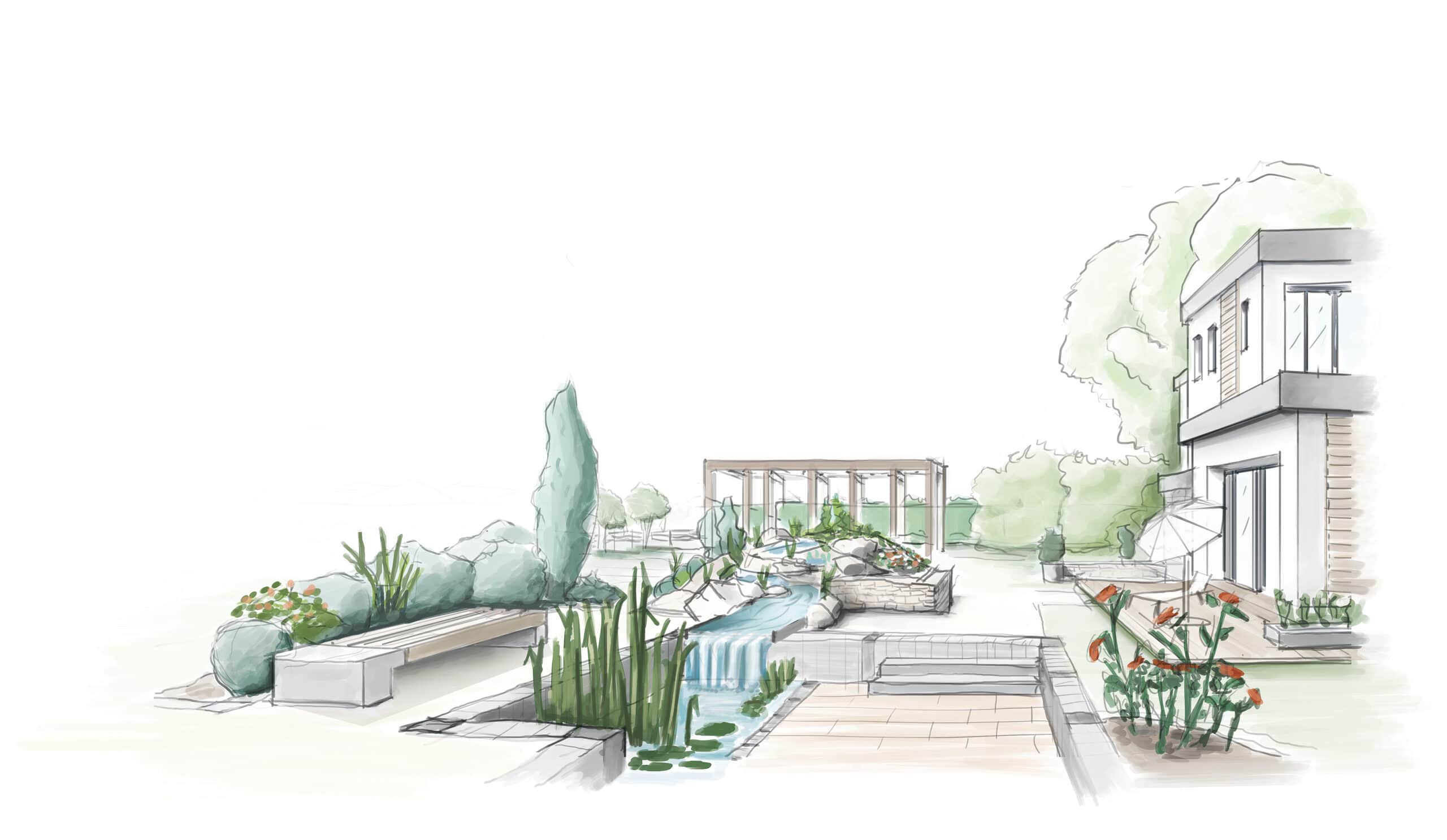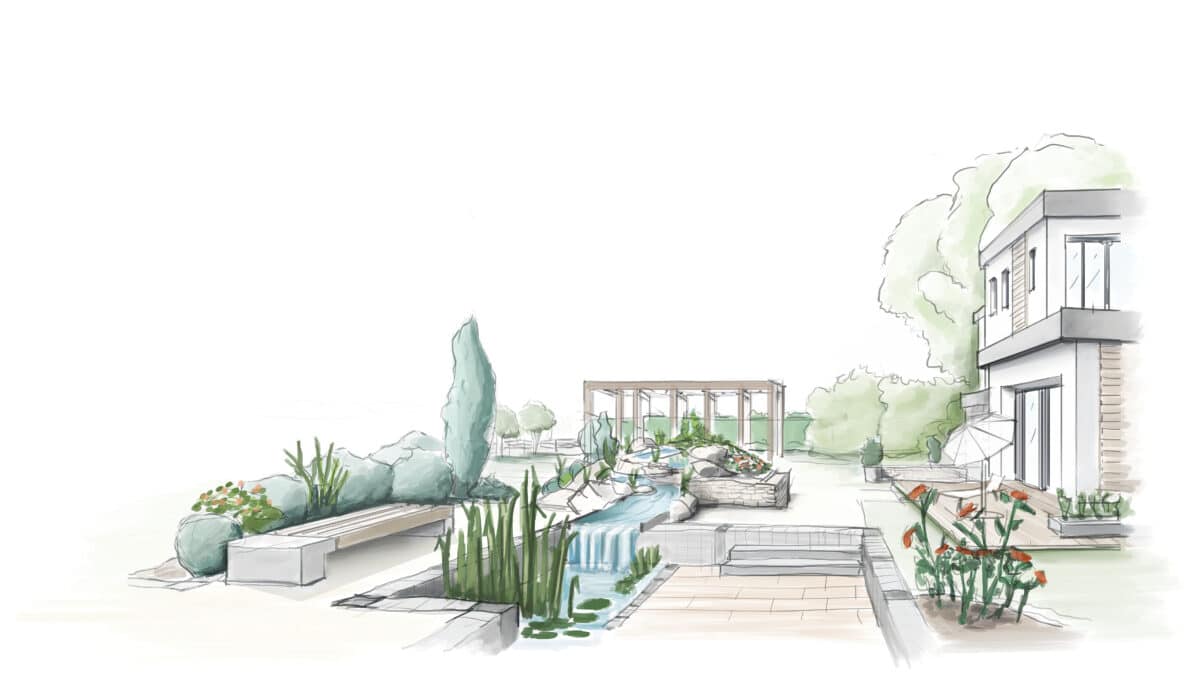Landscape Design Principles
All ugly yards have one thing in common. Have you ever wondered why your neighbor’s yard looks better than yours (or vice versa)?
Incorporating good landscape design principles matters! In this article, we’ll outline some basic landscape design principles that you can use to make your yard visually pleasing.
7 Basic Landscape Design Principles to Guide You

You may want a simple flower garden and a lawn, or you may want to include a deck and other hardscapes.
If this is your first time planting flowerbeds and adding a patio to your property, there are seven basic design principles to keep in mind:
- Balance/Order – The entire landscape design connects your outdoor space into one and extends your home. So, there needs to be a semblance of connection and transition.
- Harmony/Unity – There is an organization and balance to your landscape design. It's not haphazard or chaotic.
- Proportion – An object's size compared to surrounding objects. For example, you don't want a rock design out of proportion with your home's size.
- Repetition – You repeat some aspects of your design using plant media and focal points throughout your landscape design.
- Transition – There's a gradual change in the design as you move from one pattern into another.
- Line – Your eyes will follow your landscape lines, including the edging between a flowerbed and the lawn. For example, you can have a curving line as part of a meandering walking path, and your eyes will follow the curves until the line stops.
- Focal point – The lines and transitions guide your eyes to the focal point of your garden design. Focal points can include a tree, sculpture, a rock design, a patio, or a pondless waterfall.
Consider the Color in Your Landscape
While you have the basic landscape design principles, you must also ponder your color scheme.
Color theory is how colors work together. When you know the basics of color theory, you can add that as another element of your easy landscape design.
Plants, including trees, shrubs, annuals, perennials, and ground covers, come in many colors and are the "paint" in your landscape. Here's what you need to know about color theory:
- Remember the color wheel? The color wheel includes primary, secondary, and tertiary colors.
- Primary colors are reds, yellows, and blues.
- Secondary colors include greens, purples, and oranges.
- Tertiary colors use a color combination of primary and secondary colors.
- Neutral colors include whites, grays, and silvers.
- Warm colors energize.
- Cool colors calm.
You can mix warm and cool colors for pops of color and change your landscape perception. For example, reds and yellows promote intimacy and make your flowerbeds seem closer.
You want to add contrast to your landscape by combining cool and warm colors. Here are some contrasting color couples:
- Yellow and blue
- Blue and orange
- Red and green
- Various white flowers and leaves create a monochromatic (or moon) garden.
Don't Forget About Texture
In addition to color theory and the seven basic design principles, you want to consider texture. Leaves, bark, and blossoms provide ample opportunities to add textural interest to your garden.
Here are four types of plants that add texture to a DIY landscape design:
- Trees with different types of bark. For example, a sugarberry tree has knobby bark, and a birch tree has papery bark.
- A variety of foliage adds texture. Lamb's ears are rougher, while succulents have smooth, rounded leaves. Ferns add a soft texture because of their deep green foliage, different sizes, and low-to-the-ground growing patterns.
- Perennials, shrubs, and trees' leaf shapes, such as the weeping willow's drooping leaves, the feathery plumes of some ornamental grasses, and spiky palm leaves.
- The plant blossoms also provide texture, such as the waxy feel of a magnolia flower, the upright cluster of crape myrtle flowers, or the spiky blossom on bee balm.
While all this information about design principles, color theory, and texture may feel overwhelming, consider starting small. Gardens and landscapes take years to fill out. You can also change your design when you're a more experienced gardener.
Remember that you need to see a full-grown plant in your mind before you plant that sapling or young perennial. Plants will grow and fill out. So, a plant's baby stage won't look the same in a year or two when it's fully grown.
Suppose you're a busy professional and prefer to avoid working out in the garden. In that case, you can hire a landscape designer who has studied and perfected the above skills to create a pleasing palette for your property.
Sources:
- LandscapingNetwork.com, "Landscape Design Principles."
- TheSpruce.com, "Landscape Design for Beginners."
- Ibid, "Guide to Landscape Design."
- Ibid, "Using Basic Color Theory in Landscape and Garden Design."


